Introduction
Hydroprocessed Esters and Fatty Acids (HEFA) is paving the way for a sustainable future in the aviation industry. By transforming renewable resources like vegetable oils and animal fats into sustainable aviation fuel (SAF), HEFA offers a cleaner alternative to conventional jet fuel. This advanced process involves reacting organic feedstocks with hydrogen and a catalyst, resulting in a high-quality fuel compatible with existing aircraft engines and infrastructure.
With the aviation sector aiming for net-zero emissions by 2050, the urgent need for expanded production and use of SAF is evident. Join us as we explore the technical and analytical aspects of HEFA-based SAF production, the benefits it brings, and the challenges in scaling up its production. The journey towards a greener and more sustainable future in aviation is well underway.
What is HEFA: Hydroprocessed Esters and Fatty Acids
Hydroprocessed Esters and Fatty Acids (HEFA) is not just a technical term but a beacon for the aviation industry's sustainable future. This advanced process transforms renewable resources like vegetable oils and animal fats into sustainable aviation fuel (SAF), a cleaner alternative to conventional jet fuel. HEFA is a form of hydrotreatment which involves reacting these organic feedstocks with hydrogen and a catalyst, resulting in a high-quality fuel that's compatible with existing aircraft engines and infrastructure.
The aviation sector, responsible for around 2% of global carbon emissions, is on a path to achieving net-zero emissions by 2050. Delta Air Lines, for instance, aims to substitute 10% of its annual 4 billion gallons of jet fuel with SAF by 2030, while also striving to minimize fuel usage year over year. Saf's significance lies in its ability to be produced from waste and residue materials, not crude oil, offering a substantial reduction in carbon footprint.
Currently, only 0.1% of flights are powered by SAF, highlighting the urgent need for expanded production and use. The Biden administration aspires to increase SAF production to satisfy 100% of the US airline industry's jet fuel needs by 2050. This ambitious goal underscores the necessity for collaboration across aviation and energy sectors, public policy support, and the development of financial mechanisms to scale SAF production.
Recent developments in the industry showcase the commitment to this green transition. For example, an initiative in East Germany aims to establish production capacities for eSAF based on green hydrogen, marking a significant step toward climate-neutral aviation. Additionally, airlines are partnering with biofuel producers and technology innovators to pave the way for wider SAF adoption and to educate the public on its benefits.
Innovations in SAF production not only promise to decarbonize air travel but also to create a healthier planet for future generations. As the industry continues to educate consumers and strengthen partnerships, the day when aircraft fly on a mix of fats, sugars, and other sustainable feedstocks, moving away from fossil fuels, becomes an ever-closer reality.
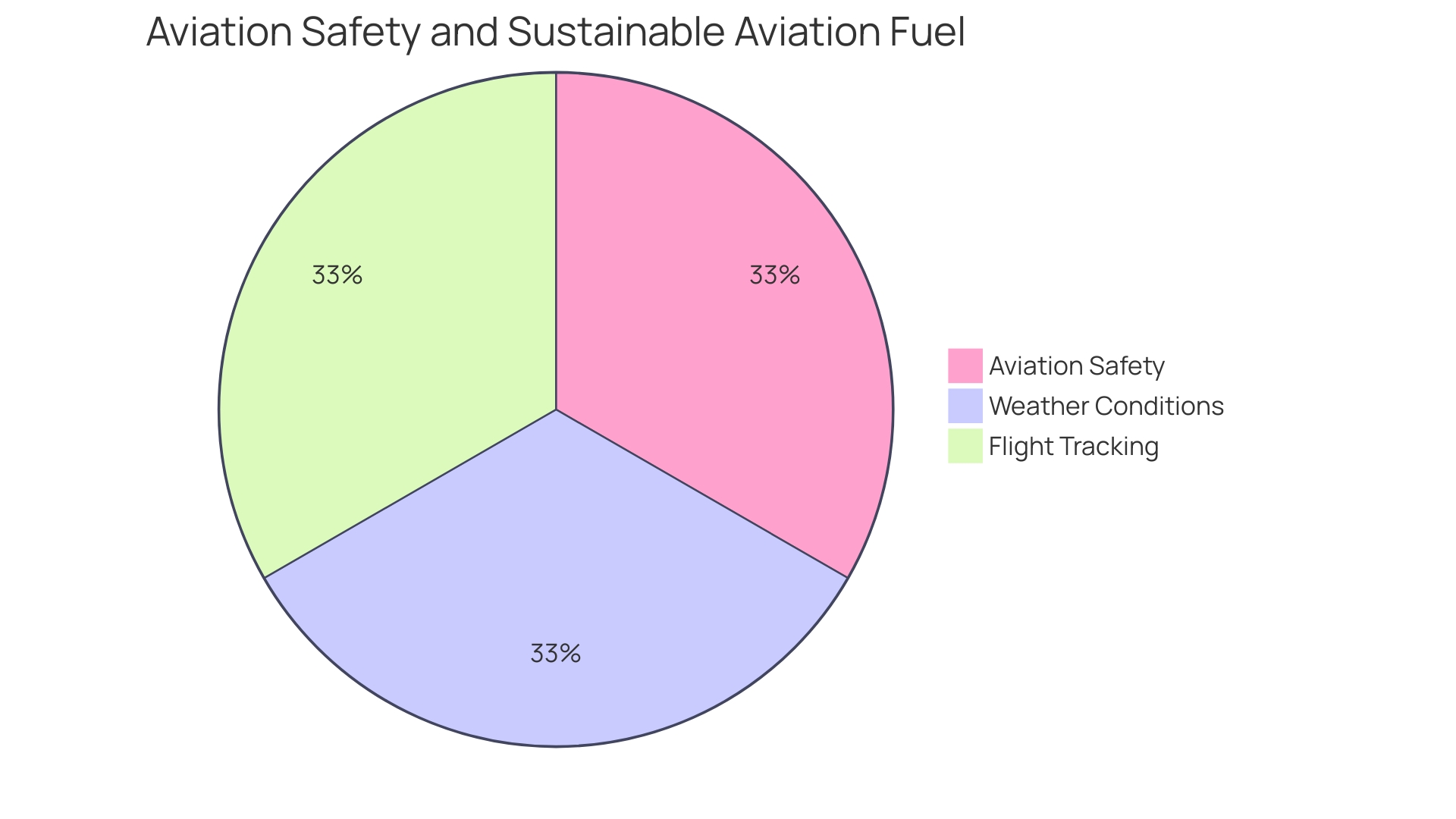
The HEFA Process: Steps and Technology
The production of Sustainable Aviation Fuel (SAF) through the Hydroprocessed Esters and Fatty Acids (HEFA) pathway is a multistep process that begins with the careful pretreatment of feedstocks. This initial stage is crucial for the removal of contaminants and moisture that could hinder the subsequent reactions. Following this, the feedstocks are introduced to a hydroprocessing phase, where they are subjected to high temperatures and hydrogen gas in the presence of a catalyst.
This critical step serves to eliminate oxygen and sulfur from the feedstocks, thereby producing a more refined and eco-friendly fuel. The culmination of the HEFA process is the meticulous separation and refining phase, ensuring the final product adheres strictly to aviation fuel standards.
The significance of this technology is underscored by its successful adoption in several commercial-scale plants, reflecting a broader industry movement towards greener fuel alternatives. For instance, the groundbreaking transatlantic flight operated by Virgin Atlantic, which utilized alternative fuels, serves as a testament to the aviation industry's commitment to reducing its carbon footprint. The flight, although not yet a routine service, demonstrated the potential for a more sustainable approach to air travel.
Moreover, innovative projects like the HYDREAMS initiative, supported by the European Union, and the green hydrogen venture by Fertiberia and Heineken Spain exemplify the industry's drive towards utilizing renewable energy sources. These projects not only address the direct carbon emissions associated with production processes but also employ cutting-edge agriculture 4.0 technologies, leveraging big data for optimized application techniques.
As the world navigates the complexities of the energy transition, the HEFA process and related advancements in SAF production stand out as pivotal elements in the pursuit of net zero targets. With stakeholders across the aviation and energy sectors recognizing the urgent need for collaboration and the implementation of effective financial and policy mechanisms, the journey towards a more sustainable future is well underway. The discourse on SAF underscores the need for both mandates and incentives to stimulate innovation and scale up production, as different regions like the European Union, the United States, and Japan adopt varied strategies to meet their environmental goals.
In light of the technical and analytical aspects of SAF production, it is clear that continuous refinement and adoption of processes like HEFA are integral to achieving the ambitious objective of carbon-neutral aviation, with the industry actively exploring a myriad of technological pathways and feedstock options to realize this vision.
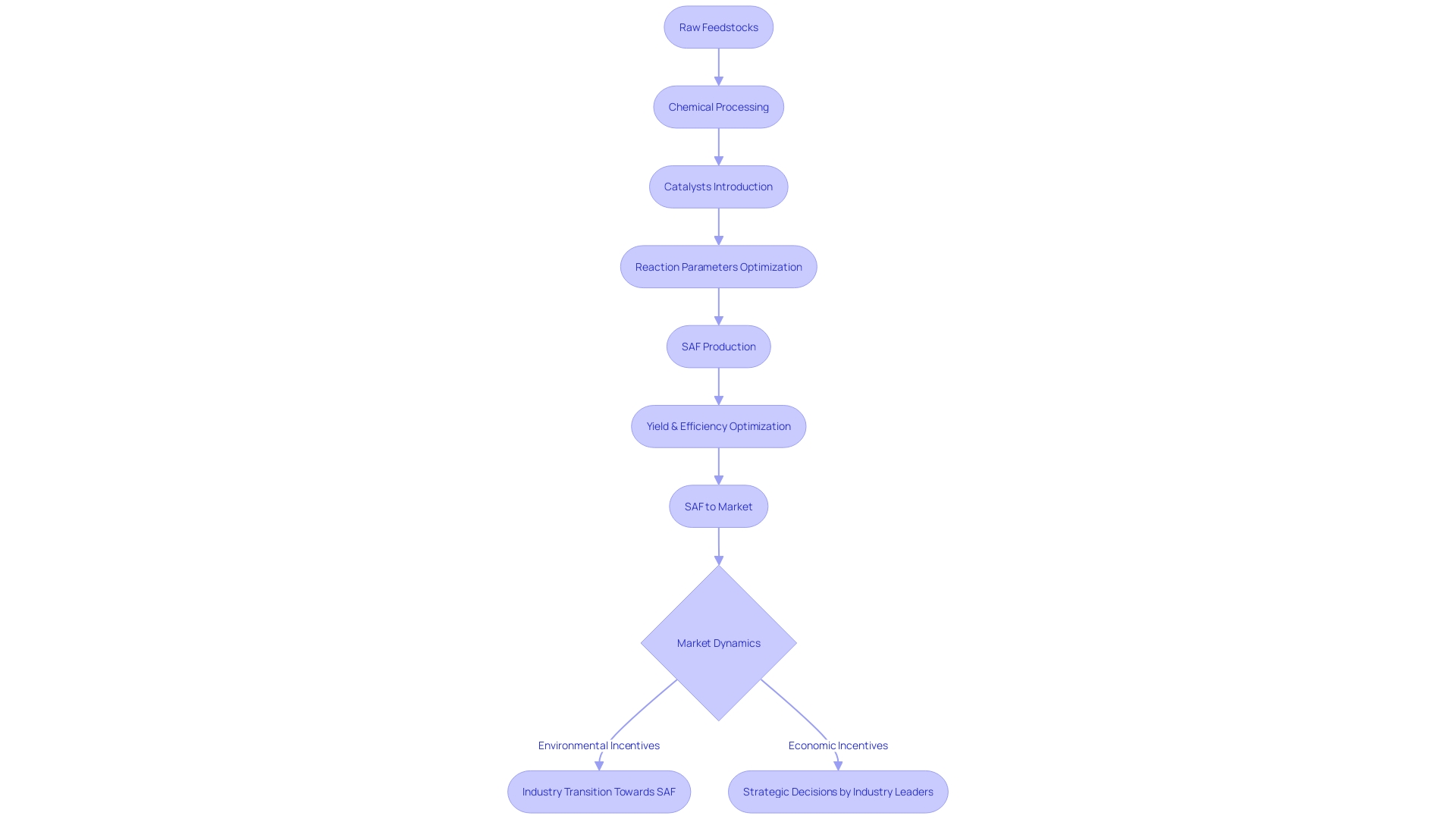
Feedstocks Used in HEFA Production
The production of Hydroprocessed Esters and Fatty Acids (HEFA) biofuels leverages a versatile array of feedstocks, ranging from plant-based oils like soybean, rapeseed, and palm, to animal-derived fats such as tallow. Used cooking oil also presents a valuable feedstock, often categorized as a waste product, which aligns with sustainability objectives in fuel production. The selection of a suitable feedstock is influenced by factors including regional availability, economic considerations, and the environmental impact.
For instance, the pioneering partnership between Airbus and Neste underscores the aviation industry's commitment to reducing emissions through sustainable practices, with initiatives like using waste and residue raw materials for Sustainable Aviation Fuel (SAF) production. Moreover, as highlighted by the World Economic Forum, currently, only a fraction of flights utilize SAF, pointing to the need for scaling up the industry. Ambitious efforts, such as Virgin Atlantic's significant strides towards net-zero carbon emissions, exemplify the sector's dedication to a greener future.
The airline's recent achievements and expansion in the US market underscore the growing demand for sustainable travel options. These developments reflect a broader trend towards decarbonization, with stakeholders in aviation and energy recognizing the necessity for collaboration, as well as financial and policy frameworks that support the upscaling of SAF production.
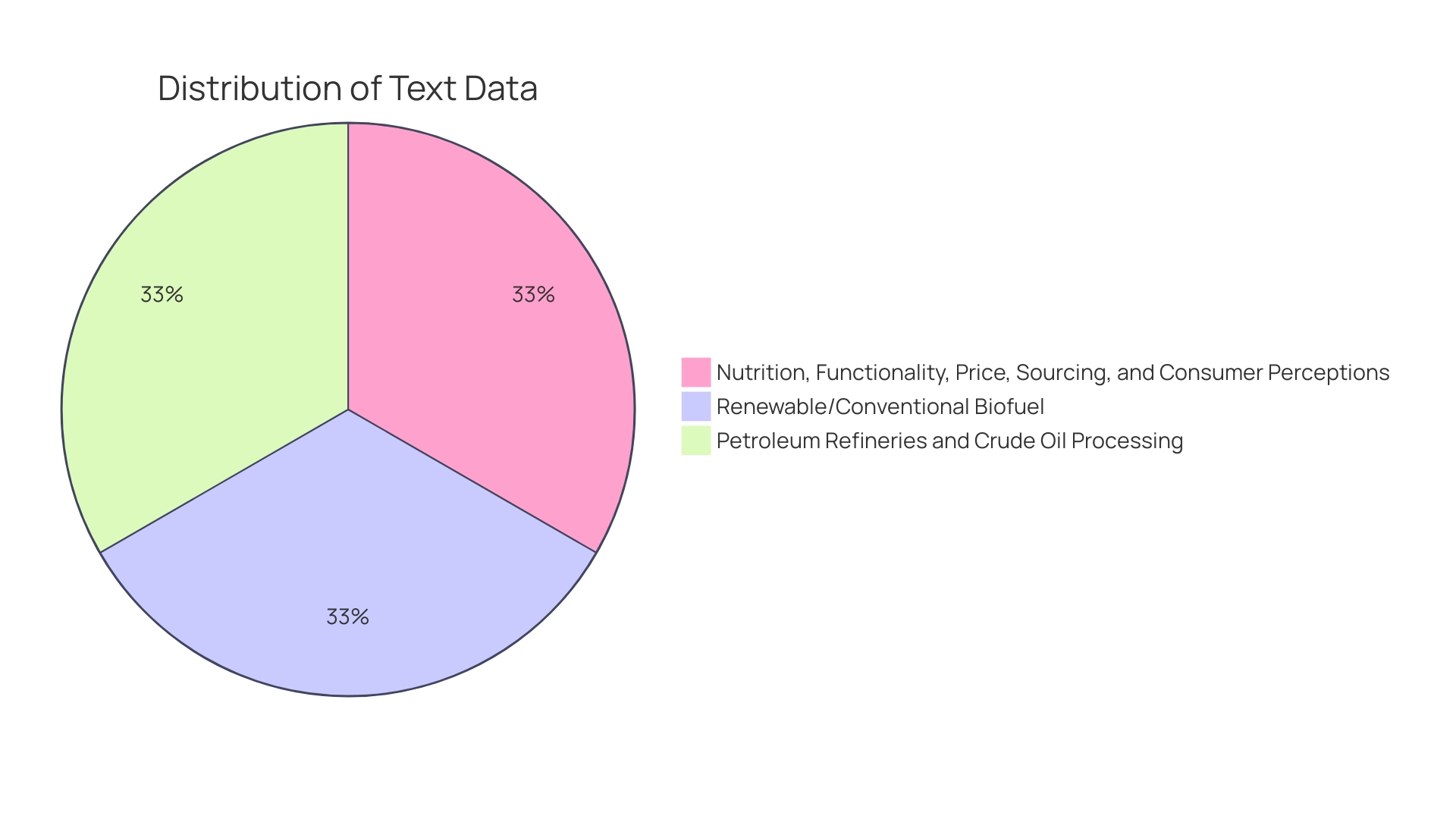
Benefits of HEFA-Based SAF
The quest for sustainable aviation fuel (SAF) such as HEFA-based fuel is making significant strides, offering a beacon of hope for an industry grappling with the urgent need to decarbonize. With its renewable and low-carbon profile, HEFA-based SAF is emerging as a key player in the push towards a greener future. It matches the performance characteristics of conventional jet fuel, thus enabling a seamless integration with current fueling infrastructure and aircraft technologies, negating the need for engine or infrastructure modifications.
This compatibility is crucial as it allows for immediate implementation without hindering the operational efficiency of airlines.
Moreover, the production of HEFA-based SAF is not just about the mitigation of greenhouse gas emissions; it also represents an opportunity to bolster rural economies. By creating demand for agricultural feedstocks, it encourages the adoption of sustainable farming practices and supports the economic stability of farming communities.
The aviation industry is on the cusp of a revolution, as highlighted by the recent groundbreaking transatlantic flight powered entirely by alternative fuels. This flight, undertaken by Virgin Atlantic, symbolizes the industry's commitment to achieving net-zero carbon emissions and underscores the viability of SAF in commercial aviation. Such pioneering efforts are complemented by strategic partnerships, like the collaborative initiative in Germany to establish eSAF production capacities using green hydrogen, further cementing the role of SAF in the future of air travel.
Despite the promise of SAF, it currently powers a mere fraction of flights. To scale up its usage, concerted efforts from stakeholders across the aviation and energy sectors are imperative. With less than 0.1% of flights using SAF, the need for collaboration, supportive policies, and financial incentives is more pressing than ever.
As we chart the course towards a more sustainable future, it is essential to recognize the transformative potential of HEFA-based SAF in reducing the environmental footprint of the aviation sector while simultaneously nurturing economic growth in rural areas.
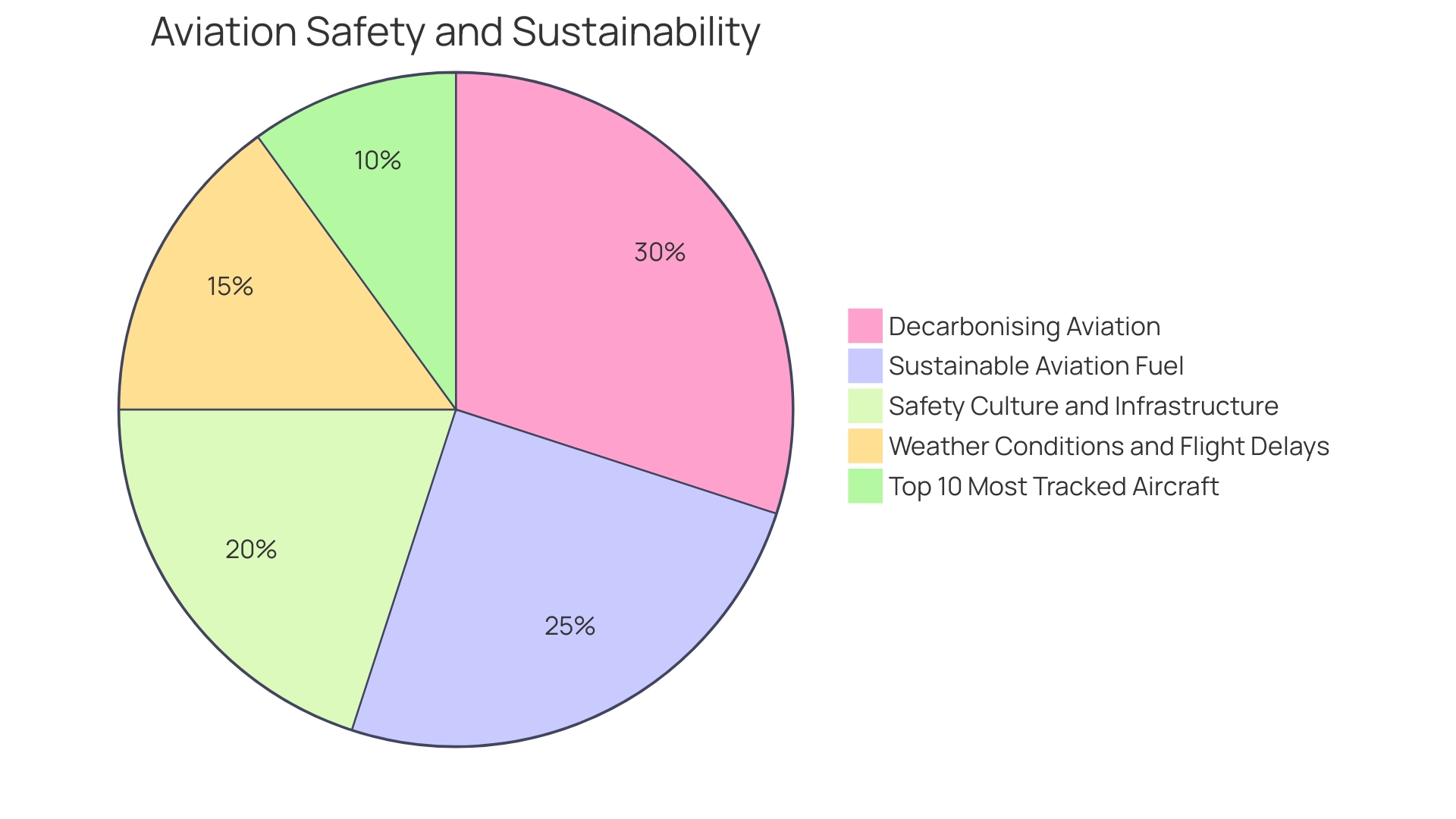
Emission Savings and Environmental Impact
Harnessing HEFA-based sustainable aviation fuel (SAF) is a transformative stride towards greener skies. When considering the full life cycle from production to combustion, HEFA-based SAF can slash greenhouse gas emissions by an impressive 80%. This dramatic reduction is a testament to the potential of SAF to counteract climate change and bolster air quality.
The reduced sulfur content in HEFA-based fuels also plays a pivotal role in lowering sulfur oxide emissions—another win for environmental stewardship. As the aviation industry propels towards a net-zero carbon future, companies like Virgin Atlantic are at the forefront, employing SAF to achieve this ambitious goal and setting a precedent for others in the sector.
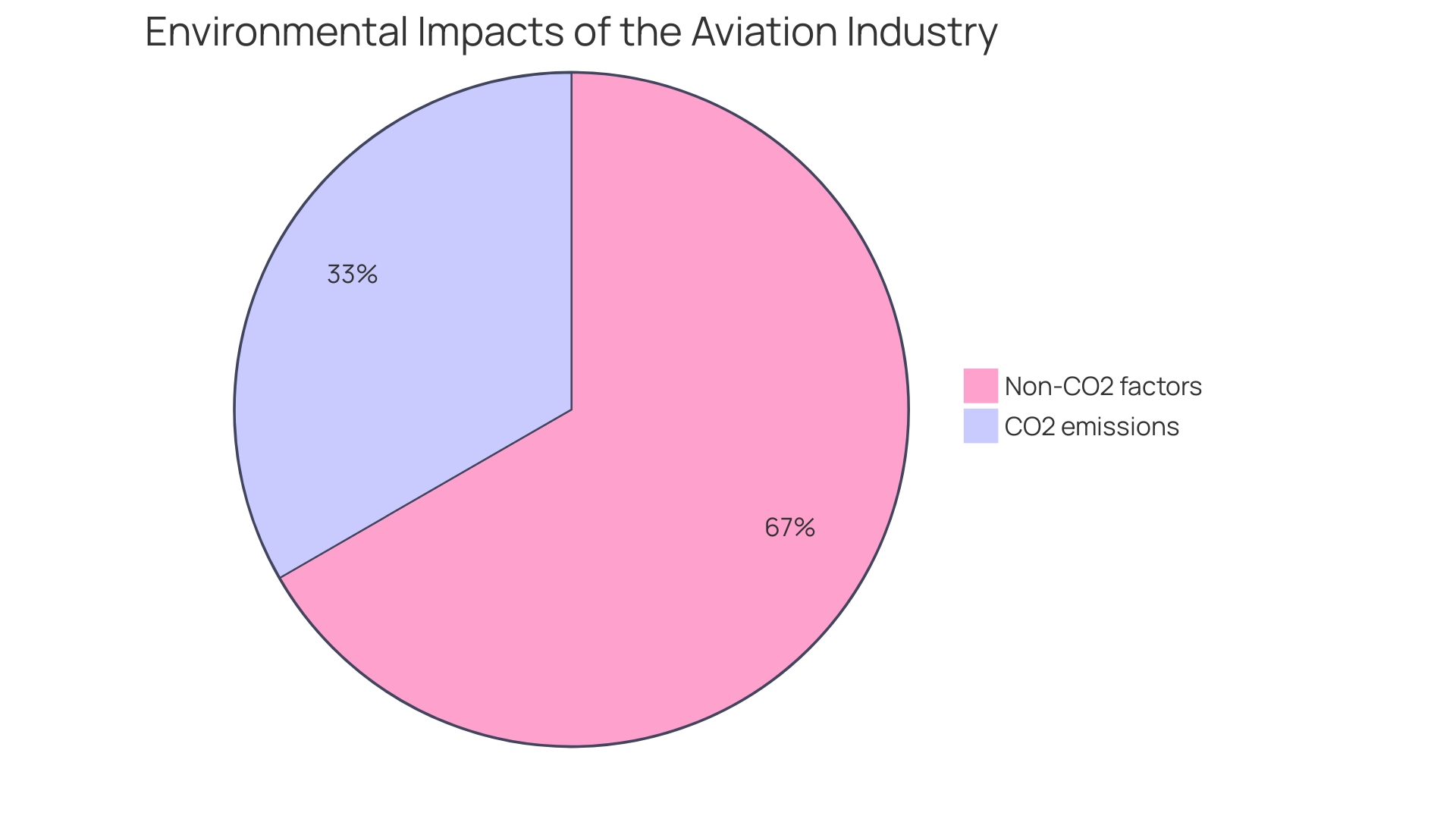
Certification and Blend Ratios for HEFA-Based SAF
HEFA (Hydroprocessed Esters and Fatty Acids) biofuels represent a significant stride towards more sustainable aviation, with a stringent certification process to ensure their quality. Defined by the ASTM D7566 standard, these synthetic hydrocarbon jet fuels are verified for their performance and safety, essential for their adoption in aviation. The versatility of HEFA-based sustainable aviation fuel (SAF) is evident in its blend ratios with conventional jet fuel, which can range from 10% to 50%.
This flexibility allows airlines to reduce emissions without compromising engine requirements or aircraft performance.
Virgin Atlantic's pioneering Flight100, powered entirely by SAF, underscores the industry's commitment to achieving net-zero carbon emissions. This initiative, along with strategic partnerships like the one between Virgin Atlantic, Delta Air Lines, and Air France-KLM, exemplifies the collaborative efforts needed to advance the use of SAF. Furthermore, Germany's initiative to develop eSAF production capacities, leveraging green hydrogen, highlights the global shift towards decarbonizing aviation.
These milestones, coupled with the fact that currently only 0.1% of flights utilize SAF, illuminate both the progress made and the vast potential for growth in this sector. The journey towards sustainable aviation is not just about reducing emissions but also about powering the future of flight in an environmentally responsible manner.
Commercial Availability and Current Use of HEFA-Based SAF
While sustainable aviation fuel (SAF) derived from Hydroprocessed Esters and Fatty Acids (HEFA) is now a commercial reality, its production and availability are constrained by several challenges. Feedstock scarcity, high production costs, and complex regulatory landscapes are significant barriers to scaling up. Despite these hurdles, the aviation industry is witnessing a paradigm shift towards sustainability, as exemplified by Virgin Atlantic's pioneering flight using 100% SAF.
This historic transatlantic flight, dubbed Flight100, marked a significant stride in the journey toward decarbonizing aviation. Similarly, partnerships like Neste x Airbus demonstrate a commitment to innovation in reducing emissions, and the expansion of joint ventures such as the one between Air France-KLM, Delta Air Lines, and Virgin Atlantic offers broader network options, potentially facilitating the adoption of SAF. These initiatives signal a budding transformation, driven by the industry's determination to achieve net-zero carbon emissions, with SAF playing a critical role in this transition.
Challenges and Roadblocks in Scaling HEFA Production
As the aviation industry accelerates towards a greener future, HEFA (Hydroprocessed Esters and Fatty Acids) biofuels emerge as a promising pathway to reduce carbon footprint. However, the transition to HEFA-based Sustainable Aviation Fuel (SAF) is not without its challenges. The availability and cost of feedstocks are significant hurdles, as they are in demand across various sectors.
This competition for resources such as vegetable oils heightens the challenge of sourcing affordable raw materials.
Investments in infrastructure and technological advancements are essential for the production of HEFA biofuels, yet they pose substantial barriers to entry for industry newcomers. Compounding these challenges are stringent regulatory frameworks and policies that can influence the market dynamics of HEFA-based SAF.
Despite these obstacles, recent strides in the industry signal a drive towards surmounting them. For instance, a historic transatlantic flight powered by a blend of traditional jet fuel and biofuel derived from fats and sugars showcased the potential of SAF. This milestone underscores the industry's commitment to a net-zero carbon emissions goal, with major airlines aiming to eliminate their carbon footprint by 2050.
Globally, initiatives like the agreement in Hamburg for setting up prospective production capacities for eSAF highlight the collaborative efforts in the energy and aviation sectors. The strategic location in East Germany to serve airports such as Leipzig/Halle demonstrates a tactical approach to integrating SAF into the supply chain.
While only 0.1% of flights are currently powered by SAF, the industry is poised for transformation, backed by policy recommendations and financial strategies from stakeholders worldwide. The US, for instance, has set a near-term target of producing 3 billion gallons of SAF per year by 2030, scaling up to 35 billion gallons by 2050. These ambitious goals necessitate a concerted effort to cultivate low-input, sustainable biomass feedstocks that can meet the demands of aviation and other transport sectors.
Environmental concerns also drive this shift. Commercial aviation contributes to approximately 3.5% of the changes in the Earth's energy balance attributed to human activity, with a significant portion stemming from CO2 emissions. The rise in emissions from the aviation sector, which have doubled since the mid-1980s, could represent a quarter of the allowable CO2 budget to limit global warming to 1.5°C by 2050.
In conclusion, while the path to scaling up HEFA-based SAF production is fraught with challenges, the concerted efforts of industry stakeholders, backed by innovative partnerships and supportive policies, herald a new era of sustainable aviation.
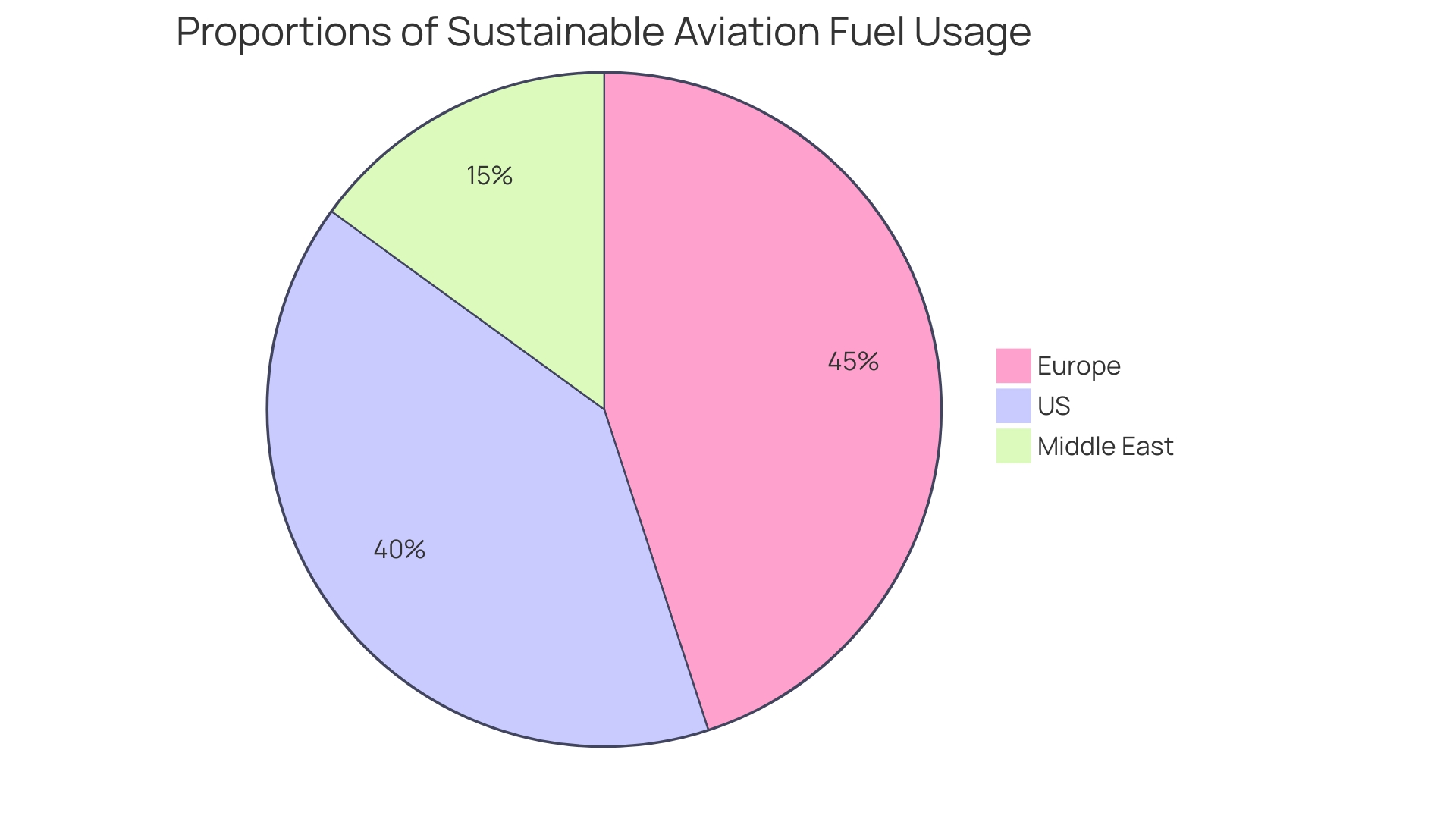
Future Prospects and Market Dynamics for HEFA-Based SAF
The trajectory of HEFA-based Sustainable Aviation Fuel (SAF) is set on an upward course, driven by the aviation industry's commitment to slash its carbon footprint and achieve net-zero emissions. The burgeoning demand for HEFA-based SAF is bolstered by technological advancements and the development of novel feedstocks, enhancing both the production efficiency and the ecological footprint of this low-carbon fuel. Crucially, the alignment of government policies and international directives with the industry's green ambitions acts as a catalyst, fostering investments and accelerating the adoption of HEFA-based SAF solutions.
Reflecting on key global regions—including Europe, the US, and the Middle East—insights from stakeholders in aviation, energy, and public sectors underscore the imperative for collaborative action. They highlight the strategic financial instruments and policymaking initiatives essential for scaling SAF. In the US alone, the aviation sector is a significant contributor to transportation emissions, and with the longevity of commercial aircraft, the transition to greener alternatives is a time-sensitive challenge.
The electrification of aircraft remains uncertain for long-haul flights, placing SAF in the vanguard for near-term decarbonization.
In the news, milestones like the eco-conscious initiatives of Virgin Atlantic, which recently expanded its US routes, echo the industry-wide march towards carbon neutrality. Germany, too, has marked its territory in the SAF landscape with a pioneering agreement to establish production capacities for eSAF, leveraging green hydrogen. This strategic move not only underscores Germany's influential role in aviation but also its commitment to cutting-edge technology and reducing CO2 emissions.
Despite the promise of SAF, its current usage in flights remains a meager 0.1%, as highlighted in a World Economic Forum article. The need for large volumes to power long-haul flights remains a challenge. However, the International Civil Aviation Organization's aspirational goal of net-zero carbon emissions by 2050 underscores the urgency with which ICAO, governments, airlines, and the industry must collaborate to mitigate the climate impact of aviation, with SAF playing a crucial role as a readily available solution.
References
HEFA biofuels, or Hydroprocessed Esters and Fatty Acids, represent a significant step forward in the quest for renewable energy sources. These biofuels are created through a process that transforms vegetable oils, fats, and greases into hydrocarbons that can be used as jet fuel or diesel replacements. The journey to commercializing bioethanol, a variant of HEFA biofuels, as a clean alternative to traditional fuels has been arduous, involving extensive private sector research, development, and perseverance.
It highlights the potential positive impact of such biofuels on the environment, as well as the challenges of scalability.
The recent upswing in the adoption of bioethanol for cooking illustrates the growing recognition of its benefits. This shift is in part due to the comprehensive reviews of existing literature, which explore the implications for research and policy on bioenergy and biofuels. The case of KOKO Networks serves as a pertinent example of the scalability challenges and the noteworthy advantages of bioethanol.
Such innovations in renewable energy are mirrored by transformations in the publishing industry, where significant mergers and acquisitions are reshaping the landscape. The Vivendi-Lagardere merger promises to bolster their international presence in content creation and distribution, while maintaining the autonomy of Lagardere. Similarly, Simon & Schuster's acquisition by KKR aims to amplify the company's strengths and contribute to the industry through shared ownership and independence.
The legal controversies surrounding the use of copyrighted works to train AI models, such as Anthropic's Claude LLM, raise pertinent questions about the intersection of technology and intellectual property rights. The ongoing debate reflects the complexity of adapting traditional copyright laws to the rapidly evolving digital environment.
These shifts in renewable energy and publishing underscore the dynamic nature of industry and the continuous interplay between innovation, policy, and market forces.
Conclusion
In conclusion, HEFA biofuels are driving the aviation industry towards a more sustainable future. By converting renewable resources into Sustainable Aviation Fuel (SAF), HEFA offers a cleaner alternative to conventional jet fuel. The urgent need for expanded SAF production and use is evident as the aviation sector aims for net-zero emissions by 2050.
HEFA-based SAF production involves reacting organic feedstocks with hydrogen and a catalyst, resulting in a high-quality fuel compatible with existing aircraft engines and infrastructure. Despite challenges like feedstock scarcity and complex regulations, the industry is making progress towards commercial availability.
HEFA-based SAF offers multiple benefits. It matches the performance of conventional jet fuel, enabling immediate implementation without modifications. It also reduces greenhouse gas emissions by up to 80% and lowers sulfur oxide emissions, improving air quality.
Certification processes ensure the quality and safety of HEFA-based SAF, and blend ratios with conventional jet fuel provide flexibility for emissions reduction.
The industry recognizes the transformative potential of HEFA-based SAF and is actively collaborating to achieve net-zero carbon emissions. Strategic partnerships, supportive policies, and financial incentives are driving the adoption of this low-carbon fuel. Technological advancements and the development of novel feedstocks further enhance production efficiency and ecological footprint.
Looking ahead, the future prospects for HEFA-based SAF are promising. Government policies and international directives aligned with the industry's green ambitions are accelerating investments and adoption. Collaboration among stakeholders is crucial to meet the goal of net-zero carbon emissions by 2050.
In conclusion, the aviation industry is on a path towards sustainability with HEFA-based SAF leading the way. By reducing emissions and fostering economic growth, HEFA-based SAF has the potential to revolutionize air travel and create a greener future for generations to come.




